
Northwest Passage Cruises
This labyrinthine waterway was long sought by early adventurers as a sea route linking the Northern Atlantic and Pacific Oceans. Canada's Arctic archipelago is therefore no …
Discover MoreSpecial Offers Available: Swoop has access to the widest range of offers and can help you find the right trip, cabin, & price.
Expert impartial advice at no extra cost: no-nonsense advice on 500 voyages across 25 ships
The Arctic Experts. No Compromises: there’s no question we can’t answer
The only B Corp certified Arctic specialist: so your adventures can be a force for good
A full concierge service, unlike booking direct: we leave nothing to chance in delivering your perfect trip

The Canadian Arctic is well known for its diverse wildlife, rich native culture and spectacular scenery. For those seeking the truly remote, an expedition deep within the Arctic Circle offers a taste of pure adventure.
Special Offers:Swoop has access to the widest range of offers and can help you find the right trip, cabin, & price.

Traversing west to east this voyage takes you to iconic sites such as Cambridge Bay, Lancaster and Smith Sounds and Ellesmere Island, before exploring the fjords and towns of West Greenland. Bears, narwhal, musk ox, beluga and northern lights are…
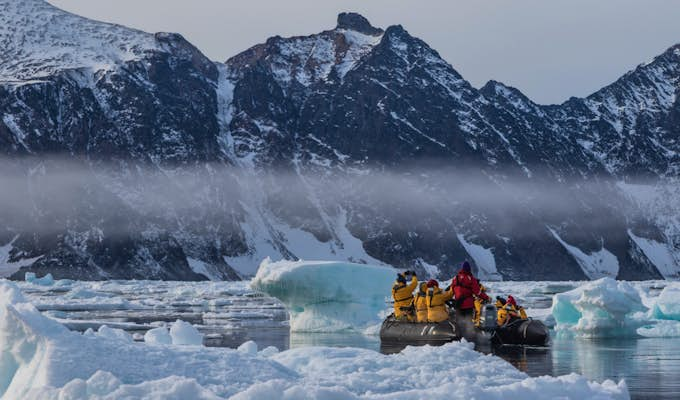
This comprehensive westbound voyage stands out for its compelling combination of West Greenland, the east coast of Baffin Island and the historic Northwest Passage. Jaw-dropping scenery, towering icebergs, thrilling wildlife encounters, Inuit community visits and fascinating history pervade this epic…
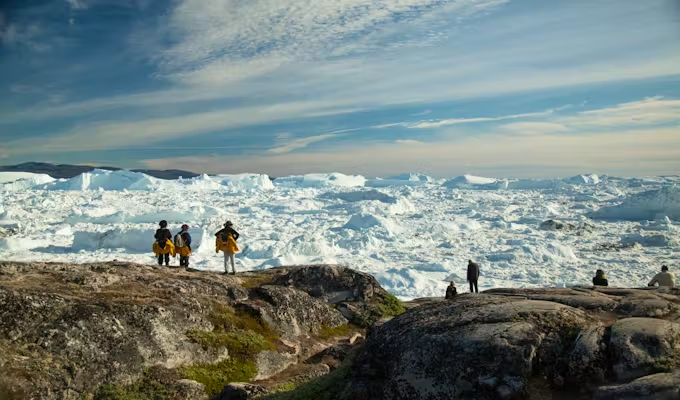
Spending time exploring Canada’s historic Northwest Passage and West Greenland, we like this voyage’s balance and variety as much as exploring little visited spots such as Thule, one of the northernmost towns in the world, and Smith Sound. Big ice,…

Circumnavigate legendary Baffin Bay as part of this extraordinary Arctic adventure which cherry picks the region’s highlights. From West Greenland’s spectacular glaciers and pretty Inuit villages to the remoteness and rich wildlife of Baffin Island, this is a journey of…
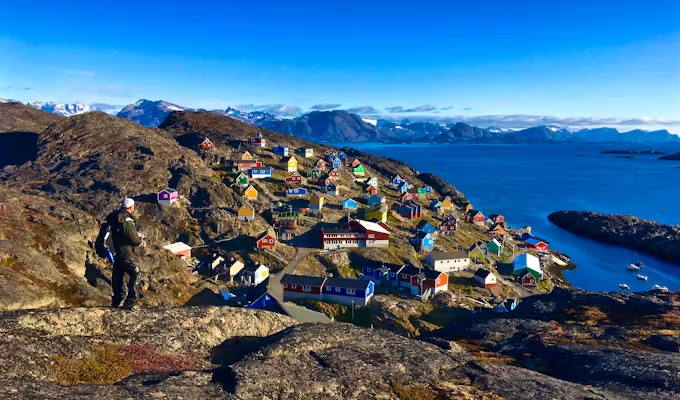
In two weeks and over 2,200 nautical miles, sail from west Greenland to Newfoundland along Canada’s dramatic Labrador coast. Along the way explore four pristine Canadian National Parks. Prepare to be wowed by the variety with everything from Inuit culture…

Zodiacs explore the ice in the Northwest Passage

Aurora over the Canadian Arctic

A polar bear in Churchill, the 'polar bear capital of the world'

A shelter with views of a glacier

Bylot Island

Humpback in the Northwest Passage


Ice in Disko Bay

Cape York in the Canadian Arctic
Canada's arctic makes up over 40% of the country's landmass, the portion north of the Arctic Circle, east of Alaska and west of Greenland. A significant chunk comprises a group of over 36,500 islands, the Canadian Arctic archipelago, located in Nunavut and part of the Northwest Territories.
Adventurous travellers are drawn to remote Baffin Island, with its bowhead whales and Inuit communities, Newfoundland's fascinating Norse history and national parks, the First Nations culture and history of Northern Canada, and of course, the famous Northwest Passage itself.

Looking out onto the ice, Northwest Passage
Distances are vast, so the best way to access the Canadian Arctic is by flying to Edmonton or Ottawa, the main gateway cities to catch an onward flight further north to Iqaluit on Baffin Island, Cambridge Bay, Resolute, Kugluktuk (Coppermine) or Kangerlussuaq in West Greenland. Here, you'll embark your ship, by far the best way to explore such a remote, vast icy labyrinth.
July and August have the most choice in terms of voyages, when the passages have become freer from ice, allowing safe passage. To transit the Northwest Passage, you should aim to travel in August.

Northern Canada is one of the best places to come into contact with Inuit and First Nations communities, the resilient, welcoming and fiercely traditional people who make the Arctic wilderness their home.
Traditions vary widely between communities, but one thing is held in common throughout, overcoming the challenges of living in a hostile, remote environment, in a rapidly changing world. Tourism is an important part of life here, and you'll find many eager to share their way of life with visitors.
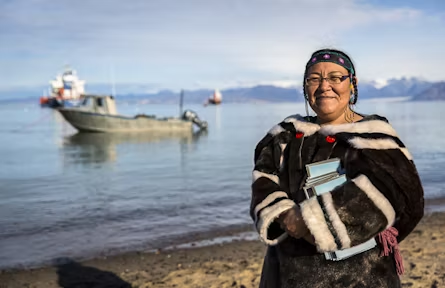
For stories of ingenuity, discovery and heroism, it's hard to beat the Canadian Arctic. For a start, here you'll find archaeological evidence of the very first Europeans in North America, tenacious vikings who settled in Newfoundland and Labrador in the 11th Century.
Back then, the Norse called this area Vinland, and led by Erik the Red they built up settlements, now a UNESCO World Heritage Site.

Viking Settlement at L'Anse aux Meadows
One thousand years later, the Northwest Passage was to become one of the most fabled adventurer's routes in the world. History books are full of stories of the daring expeditions that attempted to find a way through the Northwest Passage, most of which ended in disaster due to the labyrinthine, ever-changing icescapes.
It's possible to visit Victory Point, right near the wreck of Franklin's HMS Erebus, and Beechey island where the graves of him and his men stand proudly in the Tundra.

The wildlife in the Arctic is plentiful and also rather shy, but it can be seen with patience and tenacity. Some parts of the Canadian Arctic are better than others, and as ever with wildlife, there is a certain amount of luck involved. If seeing the Arctic Big 6 (polar bears, walrus, musk oxen, narwhal, beluga whales and birdlife) is your top priority, get in touch to make sure your cruise gives you the best possible opportunities for sightings.
Approx. 13 days in length, however, those transiting the Northwest Passage or combining with West Greenland are typically 17 - 20 days in length.
From £5,000 per person upwards, depending on the length of the voyage and the ship you are on.
To be confident of securing your preferred option the answer is - the sooner the better. Typically departure dates are released 18 months in advance.

This labyrinthine waterway was long sought by early adventurers as a sea route linking the Northern Atlantic and Pacific Oceans. Canada's Arctic archipelago is therefore no …
Discover More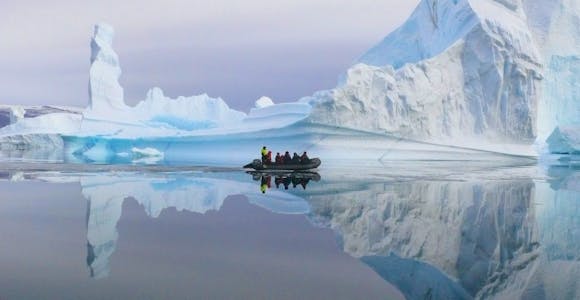
Greenland assaults your senses with pure air, crystal waters, blue ice, staggering fjords, a fascinating past and a welcoming present. Whether you are whale watching in Disko …
Discover More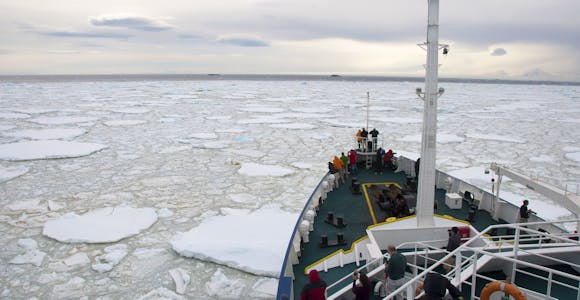
Halfway between Norway and the North Pole, Svalbard distils the best of The Arctic into one remarkable archipelago. In high summer, largely ice-free coastlines and fjords reveal …
Discover More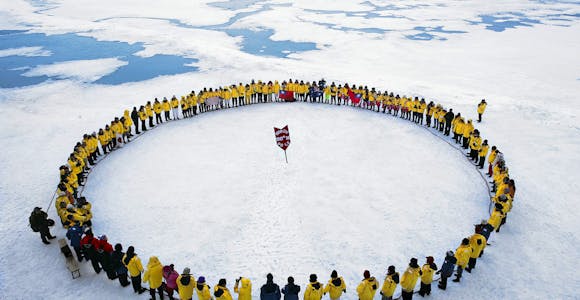
At the very top of the world, where all lines of longitude unite, lies a privilege experienced by only a fortunate few. Many dream of this legendary milestone, yet only a handful …
Discover MoreThe Arctic is so vast and diverse that one of the biggest challenges is knowing where to begin. Our exclusive guide will help you get started with your travel plans.
We'll spend some time listening to your aspirations, then discuss the kind of experience that might suit you.
Next we'll discuss the options, shortlist the best trips for you and present you our impartial recommendations.
We'll place a 24 hour hold on your preferred option - without obligation - whilst we talk through the details.
This website uses cookies to ensure you get the best experience on our website. Privacy policy
We don’t charge a commission and there are no hidden fees. Just impartial, expert advice from the leading Polar cruise agent. Schedule a call with our Arctic Experts today.